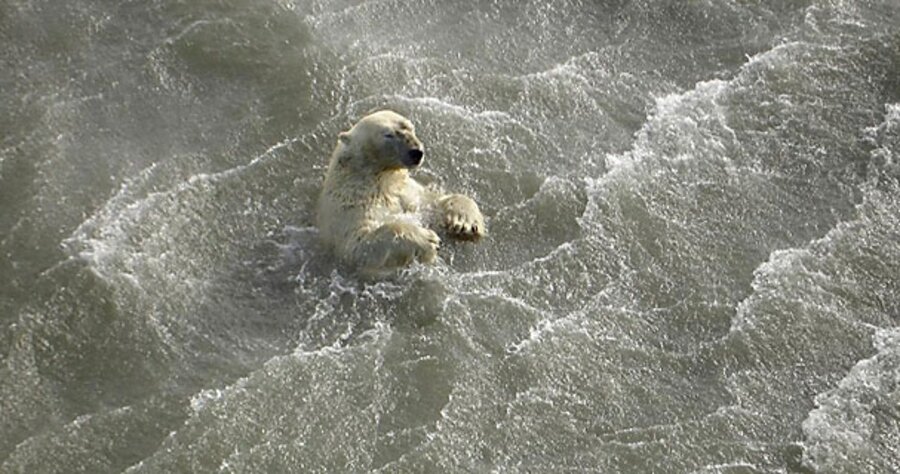North pole ice cap now an island
For the first time in recorded human history, the Arctic is completely surrounded by open water, new satellite images reveal.
Using images from NASA, scientists at the University of Bremen in Germany have concluded that both the Northwest Passage over Canada and the Northeast Passage over Russia are now free of ice, making it possible to sail around the North Pole.
Still, Arctic sea ice is not at the lowest level on record: According to the US National Snow and Ice Data Center at the University of Colorado, Boulder, that occurred on Sept. 21, 2005. But scientists say that the rate of disappearance – 10 percent in the last decade – is far surpassing their predictions. As my colleague Pete Spotts noted in this blog last week, scientists believe that the Arctic could be ice-free decades earlier than their initial predictions.
"No matter where we stand at the end of the melt season," NSIDC scientist Mark Serreze told Reuters reporter Deborah Zabarenko last week, "it's just reinforcing this notion that Arctic ice is in its death spiral."
Reuters notes that the melting of Arctic ice reduces what is known as the albedo effect – the ability of lighter colored surfaces to better reflect heat back into space:
Summer ice melt in the Arctic is seen as a strong indicator of climate change, and feeds on itself in what scientists call a positive feedback loop where warming exposes dark sea water, which absorbs more solar radiation than the white ice.
The simultaneous opening of the Northeast and Northwest passages could present a boon for shipping companies who would otherwise have to sail through the Suez or Panama canals. The German magazine Der Spiegel (translated into English on Spiegel Online), reports that the Beluga Group, a Bremen-based shipping company, wants to use the Northeast Passage to sail from Hamburg to Yokohama, Japan, cutting the journey down to 7,400 nautical miles from the 11,500 miles it would normally take.
But the opening of the Arctic is not a blessing for all. The ice is a habitat for polar bears, who could face extinction as it melts. Two weeks ago nine polar bears were spotted swimming far from the shore in Alaska’s Chukchi Sea. According to Reuters, only 12 polar bears were spotted in open water between 1987 and 2003
Those who do not believe that global warming is occurring often argue that, while Arctic sea ice is melting, ice in the Antarctic is growing. This is partly true: Ice in the eastern part of the southern continent have increased in recent years. But a paper issued by the National Aeronautics and Space Administration explains that this increase, counterintuitive as it may seem, is consistent with rising global temperatures:
Typically, warming of the climate leads to increased melting rates of sea ice cover and increased precipitation rates. However, in the Southern Ocean, with increased precipitation rates and deeper snow, the additional load of snow becomes so heavy that it pushes the Antarctic sea ice below sea level. This results in even more and even thicker sea ice when the snow refreezes as more ice. Therefore, the paper indicates that some climate processes, like warmer air temperatures increasing the amount of sea ice, may go against what we would normally believe would occur.
Update: The New York Times's Dot Earth blogger, Andrew Revkin (it could be, I suppose, an Andrew Revkin impersonator), posted a comment linking to his blog post saying that it's not quite that simple. According to Revkin, the US National Ice Center reports an what is likely an impassible icy spot on the Russian coast. It probably appeared as open water on the satellite images because there are ponds of meltwater on top of the ice. Other experts concur. If they're right, then the Arctic is now a bulbous peninsula, not an island.
Update 2: Actually, it is that simple. Revkin has confirmed that the Arctic is surrounded by open water. The web address to his original post has been scrubbed and is now a dead link.





